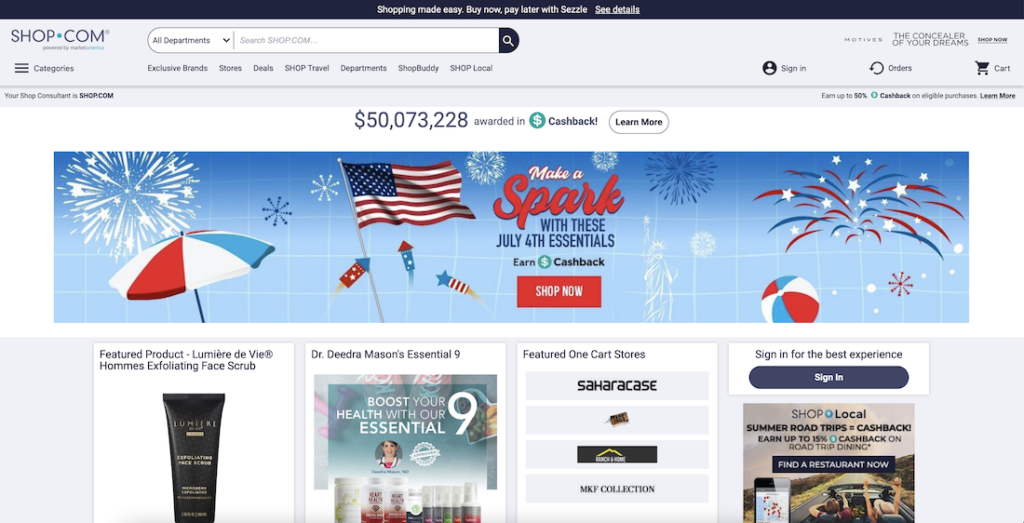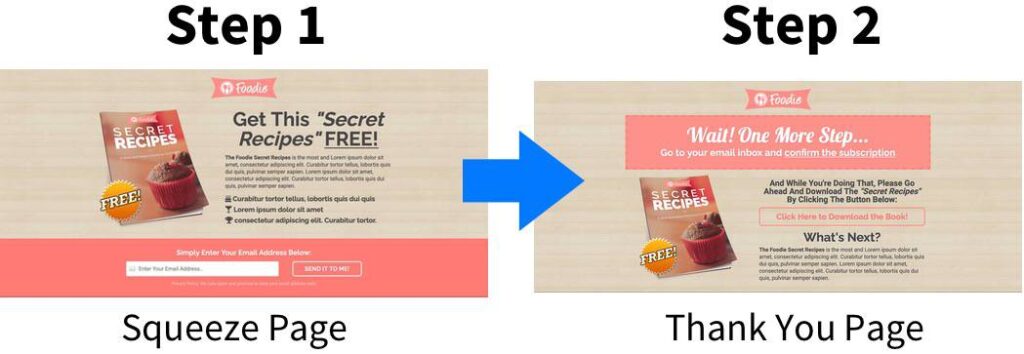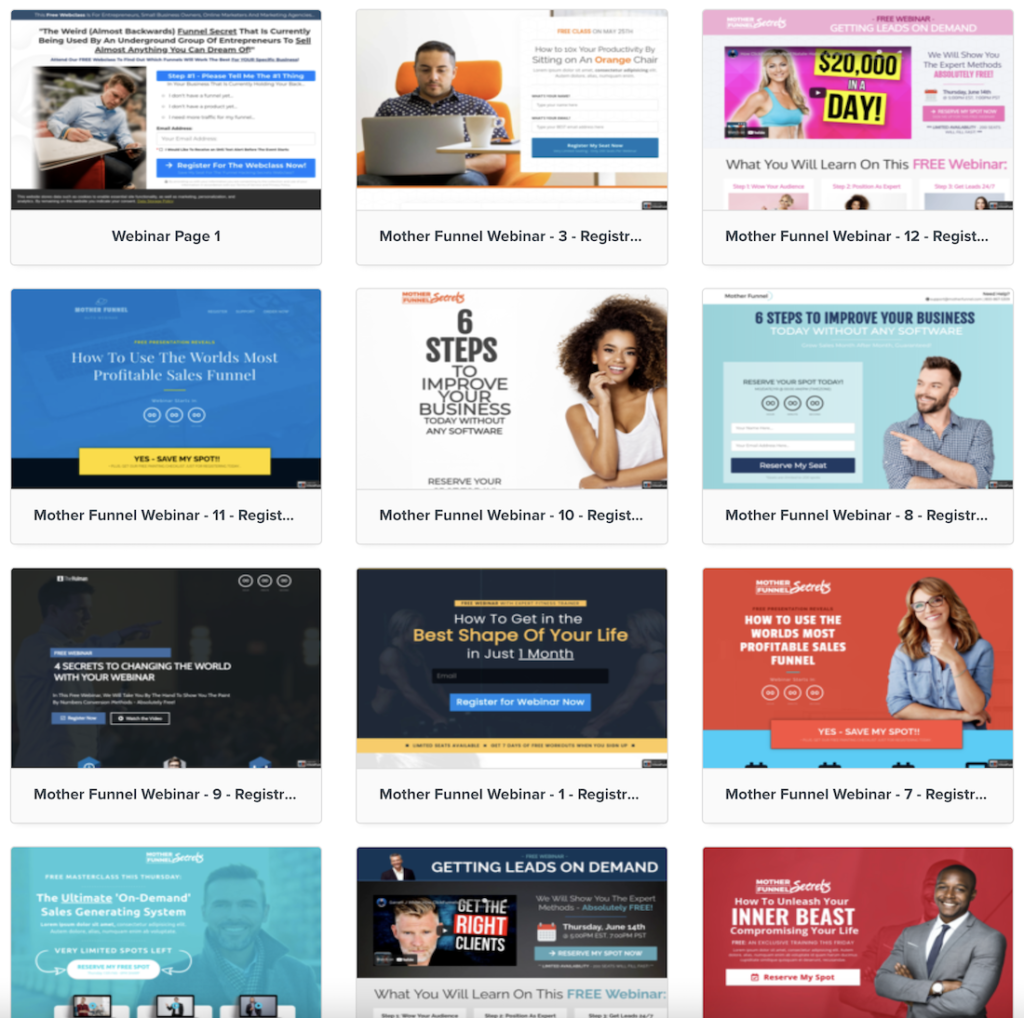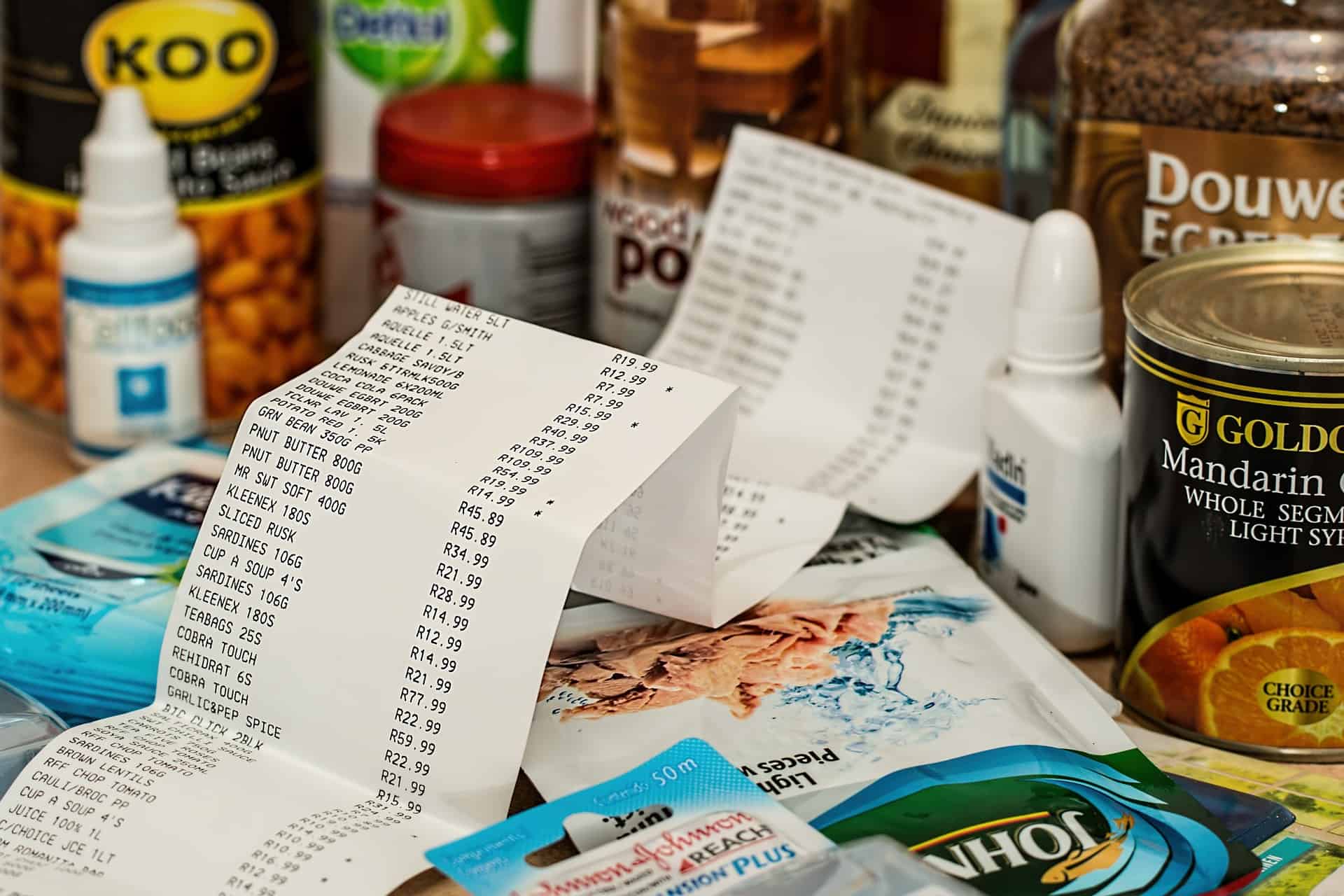Sales funnels have become incredibly popular in the last decade. But what is the difference between a sales funnel vs website? And do you need a sales funnel or is a website enough? In this article I explain the differences between a sales funnel and website. This will help you figure out if it makes sense to use sales funnels or not.
If you’re reading this article it means you’re probably not very familiar with the idea of a sales funnel.
But you probably know what a website is, right?
So let’s try to understand a sales funnel in terms of how its different from a website.
Disclosure: Some of the links in this article may be affiliate links, which can provide compensation to me at no cost to you if you decide to purchase a paid plan. These are products I’ve personally used and stand behind. This site is not intended to provide financial advice and is for entertainment only.
Sales Funnel Vs Website
Websites have been around since the 90s and became really popular in the early 2000s.
The first websites were just text and links. Later on they became more complex, with menus, images, banners and dynamic content in the form of articles, comments and forums.
If you think of a traditional website, one thing that you’ll probably notice is that there are a lot of options and things to click on. There’s menus at the top, at the bottom and in sidebars. There might be banner ads, popups, buttons, login screens and lots of other things on the website.
It’s sort of like the equivalent of being in a busy mall with dozens of aisles, people running around, several floors and departments and lots of options to choose from.
If you want to buy something on a website (or a mall) you have to find your way around the place, navigate the space, search for the exact product you want and maybe even ask a store clerk for help.
This can be messy and overwhelming.
The Problem with Traditional Websites
Websites are no different. There are so many things to explore, click on and distract you that by the time you’re ready to make a purchase you already got distracted, something interrupted you, you clicked on something that took you away from the website or you just got lost.
Here’s an example of a website with many menus, links and options:

It doesn’t take a genius to realize that this isn’t necessarily the best environment to facilitate sales. If there is an overwhelming amount of choice, we get distracted and our decision making muscles fatigue to the point where we are unable to decide or act.
Have you ever wanted to watch a movie or series and found yourself spending half an hour browsing and picking something to watch? By the time you found something you probably already had to get back to work or head to bed.
This is an example of decision fatigue. The sheer amount of choices and options cripples our ability to decide and act, even if we have a desire to do so.
There are even experiments where one group of people was given just a few choices and another group was given a lot of choices, and psychology backs up our anecdotal experience. The group with more choices took action less than the one that was presented fewer options.
So with that said, what is a sales funnel? And how does a sales funnel fix this problem?
Let’s go deeper and explore the difference between a sales funnel vs website with some more examples and analogies.
What Is a Sales Funnel?
A sales funnel is a website that mostly has two options.
You either do something or you leave the website, the exact opposite of a traditional website that has dozens or hundreds of links, navigation and pages.
Apart from mostly consisting of two options, a sales funnel usually consists of multiple pages layered on top of each other to guide a visitor strategically from point A to point B.
Here’s a simple lead generation sales funnel:
- An email opt-in page
- A thank you page with a special offer
As you can see the email opt-in page doesn’t look like a traditional website. There are only two actions a user can take. You can either leave the page or enter your email address.
Here’s an example of a simple sales funnel:

There’s literally nothing else you can do on the page, no navigation, no distractions and nothing that could divert the visitor from taking the action you want to encourage.
This type of email opt-in page is a “squeeze page”.
Understanding Sales Funnels
Remember the introduction to this article where I talked about what a funnel is?
A funnel sort of squeezes out stuff. Whatever enters into the top of the funnel is squeezed.
In the case of an online sales funnel, website visitors enter the top of your funnel. Some might drop off and just leave the page and not enter their email address. But a good chunk of people will opt-in and progress to the next step of the funnel.
Are you getting the idea?
In the case of a lead generation funnel a sales funnel might just consist of two steps. Once the visitor leaves their email address they end up on a “thank you” page where they can access the free thing.
And maybe the next step in the funnel is a special offer for something paid. Possibly also some follow-up emails to try and sell the lead something related to the free gift.
Example of a Sales Funnel
There are also more complex sales funnels that consist of 3-10 steps.
A popular type of sales funnel is the automated webinar funnel. This type of funnel sends visitors to an automated on-demand presentation they can watch at predetermined hours and days.
At the end of the presentation there is an offer to purchase medium or high-ticket product, often an online course, software, bundle of products or high-ticket service.
Here’s what an automated webinar funnel looks like:
- Webinar registration page
- Webinar registration confirmation page
- Watch Room
- Order page
- Order confirmation page
At first, visitors land on a page that advertises a free training, presentation or webinar. The only action a visitor can take on that page is either register for the webinar or leave the page.
Once a visitor has registered, they’re redirected to a confirmation page that reminds them when the webinar they signed up for takes place. Maybe there’s a video or some content that warms people up, or possibly a first opportunity to buy something.
Between registering and the webinar, the registrant usually gets reminder and or warmup emails to keep the person excited for the upcoming webinar and build some more trust, authority and rapport.
Finally, on the day and time of the webinar, the registrant hopefully enters the webinar room and watches the pre-recorded presentation, training or webinar.
From within the watch room page, there can be a link to a sales page or order page where registrants can purchase the product or service that was pitched at the end of the webinar.
Once someone purchases, they’re taken to the order confirmation page with further instructions on how to access the purchased product or service.
Can you see how this works?
Different Types of Sales Funnels
The automated webinar funnel is just one example of a sales funnel.
There are sales funnels for almost anything you can think of:
- Physical products
- SaaS companies
- Lead generation funnels
- Product launch funnels
- Selling cheap products with the intention of upselling buyers later
- High-ticket coaching and consulting
- Live events and summits
The list goes on and on.
The bottom line is that most online selling these days happens through sales funnels and not traditional website.

Traditional websites are simply too distracting and noisy and often fail to effectively guide the visitor from being interested all the way to making a purchase and becoming a happy repeat customer.
While many brands still use websites, they do this mostly as a way of building authority and as a “catch all” last resort for people who search for the brand or aren’t already in a specific sales funnel.
You can think of traditional websites more as online “business cards”.
They still serve a role but they aren’t as effective at driving purchasing behavior.
Sales Funnel vs Website: “Water Bucket Analogy”
Traditional websites are sort of like buckets with lots of leaks. If you pour water in a bucket that’s leaky, you’ll lose most water.
But if you have a bucket with no holes, you can retain the water, or in the case of a business the visitors and customers interested in learning about a product or making a purchase.
If you own a business, ask yourself how “leaky” your bucket is?
Do you have an airtight and effective way of turning your website visitors into leads and paying customers? Do you have a process in place that effortlessly guides people through the purchasing decision?
If the answer is yes, you are one of few business owners ahead of the curve.
And if the answer is no, you now know how to fix things. You need a sales funnel or even multiple sales funnels to make the process of converting visitors into paying customers more efficient.
How to Use Sales Funnels in Conjunction with a Website
You don’t actually need to get rid of your website.
As I mentioned already, traditional websites still serve the purpose of building authority and acting as a “catch all” place for people to find your brand or business if they search for you.
But you could create a lead generation funnel that offers a free gift or coupon code and link to it from your websites home page. That’s as simple as adding a call to action and a button on your homepage, then linking to your opt-in page and voilá, you now made your website more effective.
You can also use sales funnels for paid advertising. If you’re running Google search ads or any type of advertising, you almost certainly should send people to a sales funnel to make your ads profitable or break even.
The amount of business owners that are running ads and aren’t profitable or don’t even know if they’re making or losing money from the ads is astonishing.
At the very least, using a sales funnel when running ads increases your odds of a successful ad campaign.
Finally, once you start generating leads, building your email list or getting contact details, you can send out special email marketing campaigns to your list that, you guessed it, sends people to another sales funnel.
As you can see, it’s not necessarily about having one magical sales funnel although some people build their business off the back of just one sales funnel.
More frequently, a business will have a traditional website and then use several different sales funnels in the background to convert website visitors more efficiently into paid customers, run more profitable paid advertising campaigns and monetize your existing audience.
How to Create a Sales Funnel
If you’re a business owner and wondering how to create a sales funnel, keep reading.
Creating a sales funnel isn’t hard at all these days. There are specific tools that allow you to build beautiful and high-converting sales funnels “out the box” without any technical or design skills.
One of these software is Clickfunnels.
Another popular option, which is slightly simpler, is Leadpages.
With sales funnel builders like this you can pick from hundreds of templates and put together a sales funnel that makes sense for your type of business with the click of a few buttons.
If you want the process to be even simpler, you can use one of my done for you sales funnels.
Or import one of the these sales funnel templates.
You can literally just import most sales funnels into your Clickfunnels account.
This way, you don’t even have to rebuild a sales funnel you like, you can just import it with one click and it’s fully set up in your account and pretty much ready to go.
You just have to edit the text and swap out the dummy logo with your own, but even a 5-year old can do this using the drag-and-drop page editor.
Conclusion: Sales Funnel vs Website
What’s the difference between a sales funnel vs website? A sales funnel is a set of web pages that are optimized for conversions and guide visitors through the buying process. Sales funnels are like “plugs” that fix leaky websites that are losing visitors, customers and sales every day to overwhelm, decision fatigue and distraction.
Do you need a sales funnel? Traditional websites are still important, but almost every business that is planning to get customers or clients online needs one or multiple sales funnels.
The good news is that setting up a sales funnel is a lot easier than setting up or managing a website.
There are a ton of sales funnel builders like Clickfunnels and dozens of sales funnel templates and done for you sales funnels that you can import into your account and use without any technical experience or design skills.




